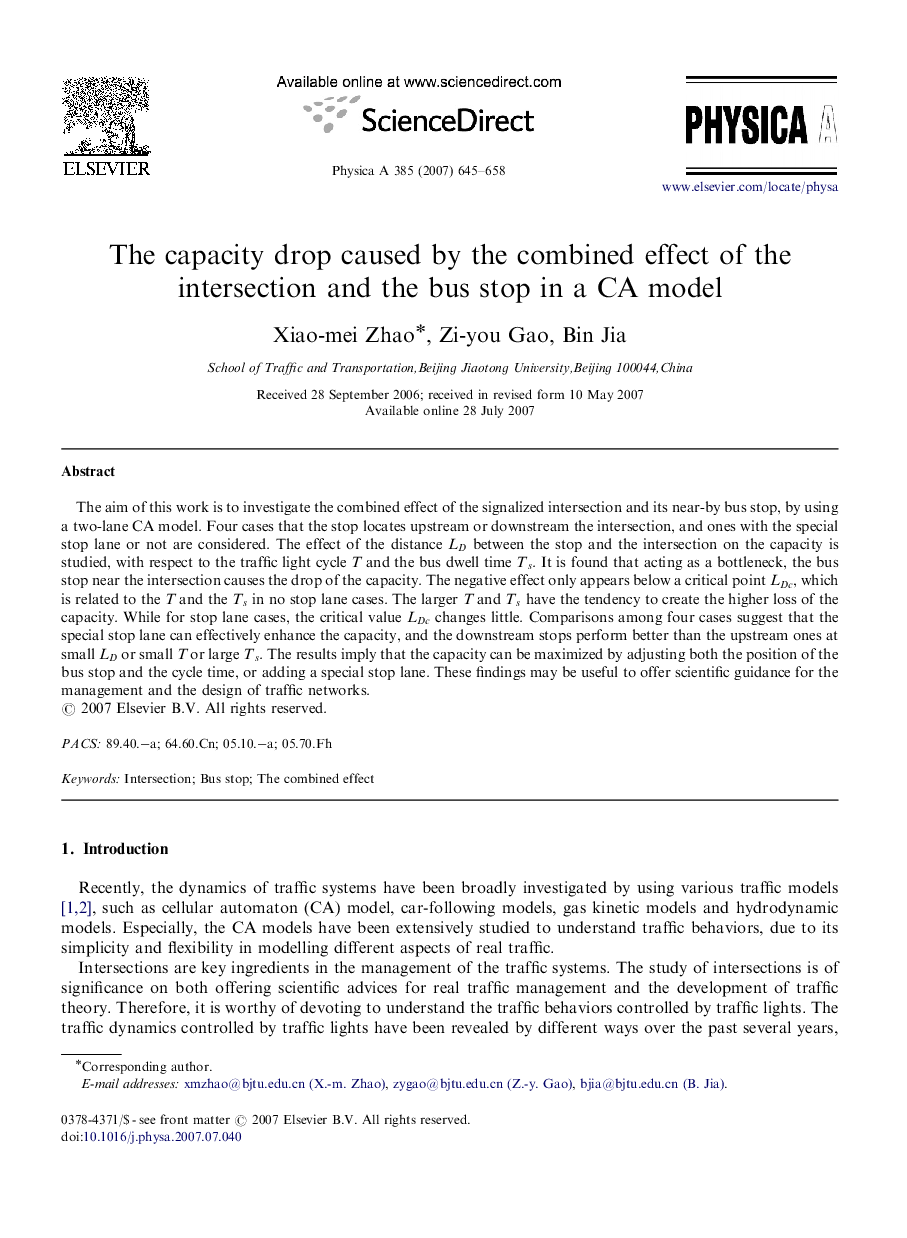| Article ID | Journal | Published Year | Pages | File Type |
|---|---|---|---|---|
| 976660 | Physica A: Statistical Mechanics and its Applications | 2007 | 14 Pages |
The aim of this work is to investigate the combined effect of the signalized intersection and its near-by bus stop, by using a two-lane CA model. Four cases that the stop locates upstream or downstream the intersection, and ones with the special stop lane or not are considered. The effect of the distance LDLD between the stop and the intersection on the capacity is studied, with respect to the traffic light cycle T and the bus dwell time TsTs. It is found that acting as a bottleneck, the bus stop near the intersection causes the drop of the capacity. The negative effect only appears below a critical point LDcLDc, which is related to the T and the TsTs in no stop lane cases. The larger T and TsTs have the tendency to create the higher loss of the capacity. While for stop lane cases, the critical value LDcLDc changes little. Comparisons among four cases suggest that the special stop lane can effectively enhance the capacity, and the downstream stops perform better than the upstream ones at small LDLD or small T or large TsTs. The results imply that the capacity can be maximized by adjusting both the position of the bus stop and the cycle time, or adding a special stop lane. These findings may be useful to offer scientific guidance for the management and the design of traffic networks.
